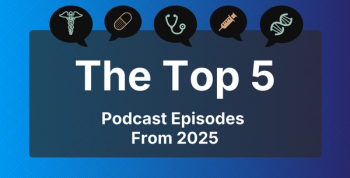
Review Says Therapies Are Boosting Survival From PAH
A new review article shows positive trends in survival, as scientists better understand the different types and symptoms of pulmonary arterial hypertension (PAH).
Left untreated,
In the United States, about 10.6 cases of PAH occur per 1 million adults, the authors wrote. PAH arises when increased pulmonary vascular resistance elevates pressure in the pulmonary arteries—but its symptoms are nonspecific. The authors said dyspnea upon exertion and fatigue are 2 common symptoms. Thus, they said patients with unexplained dyspnea should be evaluated for PAH.
One reason the diagnosis of PAH can be complicated is that it is 1 of 5 subcategories of pulmonary hypertension, which is defined as mean pulmonary arterial pressure greater than 20 mm Hg. PAH is distinguished by pulmonary artery wedge pressure of 15 mm Hg or lower and pulmonary vascular resistance of 3 Wood units or greater, the authors said. However, PAH itself can be broken down into several subgroups based on its underlying etiology.
These subgroups include idiopathic PAH, which the authors said meets the technical definition of PAH, but which comes without other disease processes, such as collagen vascular disease or liver disease. Roughly 4 in 10 patients fit into this category, although the exact rate varies by study.
Between 6% and 10% of patients have heritable, or familial, PAH, most commonly associated with the BMPR2 gene. Other patients have PAH as a result of drugs or toxins, including methamphetamine and dasatinib (Sprycel).
Yet another subgroup is patients whose PAH is associated with other diseases, such as connective tissue disease or HIV. Others develop PAH after long-term response to calcium channel blockers. Five to 10% of patients with PAH have pulmonary veno-occlusive disease and pulmonary capillary hemangiomatosis. Lastly, a small percentage of patients have PAH at birth, the authors said.
In addition to dyspnea and fatigue, patients often report lower extremity edema or heart palpitations. Although an echocardiogram can be a good first step toward diagnosis, the investigators said the disease can only be diagnosed with a right heart catheterization, a procedure they note has a low risk of complications.
In terms of treatment, the authors said currently available treatments include drugs designed to enhance the nitric oxide–cyclic guanosine monophosphate pathway, prostacyclin agonists, and endothelin pathway agonists. These include sildenafil (Viagra), epoprostenol (Flolan), and bosentan (Tracleer), among others. These therapies have helped to boost the 5-year survival rate among patients with PAH from just 1 in 3 in 1991 to 60% in 2015, the investigators noted.
Adjunctive therapies, such as diuretics and aldosterone agonists, are commonly used in patients with PAH. Oxygen therapy is also recommended in patients with PaO2 levels that remain consistently under 60 mm Hg, the authors noted.
One note physicians need to keep in mind, they concluded, is that women who are pregnant and have PAH are at high risk of ventricular failure and death due to cardiac changes related to PAH. They said women with PAH should avoid contraception that includes estrogen, as this can increase the risk of thromboembolism.
Reference
Ruopp NF, Cockrill BA. Diagnosis and treatment of pulmonary arterial hypertension: a review. JAMA. 2022;327(14):1379-1391. doi:10.1001/jama.2022.4402
Newsletter
Stay ahead of policy, cost, and value—subscribe to AJMC for expert insights at the intersection of clinical care and health economics.








































